Our Top Pet Health Tips for Autumn
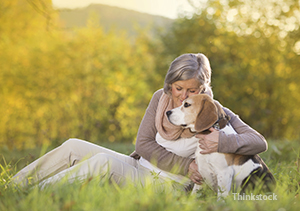
Ahhh, Fall! This time of year means football, crisp air, colorful foliage, and even, depending on where you live, a little bit of snow. It’s a great time to get outside with your pet; for a dog, there’s nothing like a romp in the leaves, while for cats, midday sunbeams have never felt better as the days get shorter and the nights get colder. When it comes to keeping your pet healthy and helping him enjoy fall to the fullest, there are some things to keep in mind. Read on for our top fall pet tips.
#1. Watch out for ticks in fall
Just because fall is here doesn’t mean that ticks aren’t still lurking. In fact, according to the University of Rhode Island, many species of ticks are active even into the winter and can survive the first frost. Here are some tips to keep your pet tick-free this fall:
- Don’t let ticks cozy up. Eliminate their favorite environments, such as leaf and garden litter, where ticks can sometimes survive even into winter.
- Check for ticks frequently.
- Continue using tick control and repellent products, especially if you spend a lot of time outdoors with your pet enjoying activities like hiking, camping, or hunting.
- Ask your veterinarian about regular screening for tick-borne infections. (The Companion Animal Parasite Council recommends screening annually for tick-borne infections.)
[Learn about tick disease in your area.]
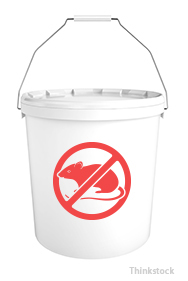
#2. Beware rat poison and other rodenticides
Fall is the time of year when mice, rats, and other rodents start to scurry for warmth. And where do they find it? You guessed it – you're home!
Be careful when it comes to mouse traps and rodenticides like rat and mouse poison. Nobody wants an infestation of mice, but many poisons that are currently on the market can be very harmful to dogs and cats. Direct ingestion can be deadly. Make sure you talk to your veterinarian about methods of pest control that are safe for your pets.
Even if you don’t have a rodent problem or choose to deal with mice and rats humanely using live traps, you never know what methods your neighbors are using. The carcasses of rodents that have been killed by rodenticides can also be dangerous, so if you see the telltale tail dangling from your pet’s mouth, make sure he drops it and keep an eye on him, and if you think your pet has eaten any of the rodents, contact your veterinarian immediately.
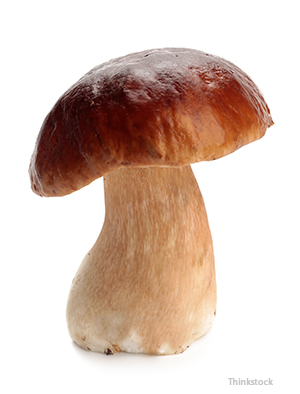
#3. There is a fungus among us!
In some regions of the country, fall is just as wet as spring. That means that more mushrooms dot backyards and forest floors. While most mushrooms are perfectly safe, there’s a small percentage that are highly toxic to our furry friends (and to us!). Check out this handy guide from the ASPCA to stay informed about toxic mushrooms, and if you think your pet has gobbled up a toxic mushroom, contact the ASCPA Animal Poison Control Center immediately!
#4. Feed your pet right
It’s getting colder out there, and cool temperatures mean more energy is needed to stay warm. You’ll probably need to feed your pet a bit more food – food generates body heat, so pets who spend a lot of time exercising outdoors need to eat more than in the summer. However, don’t start dishing out more food just yet – make sure you talk to your veterinarian first, as every pet’s needs are different.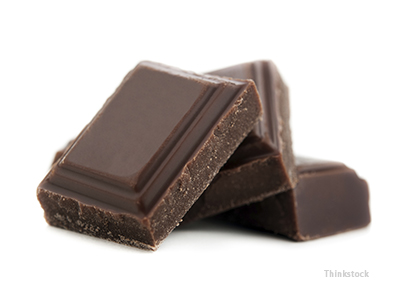 #5. Watch out for antifreeze toxicity
#5. Watch out for antifreeze toxicity
In preparing for the winter months ahead, people tend to use fall to winterize their cars. This often involves changing fluids such as antifreeze, which can be deadly for pets. Consider this: one to two teaspoons of the stuff can kill a 10-pound dog! Less can kill a 10-pound cat.1
Part of the problem is ethylene glycol, a substance in antifreeze that has a sickly-sweet smell that entices pets to lap it up. That’s why it’s important to clean up spills immediately and make sure your pets steer clear of the garage while you’re working on your vehicle. Read our in-depth article to learn more about the dangers of antifreeze and other automotive fluids.
#6. Beware chocolate and hearty foods
The fall and winter parallel our holiday seasons when we ramp up our intake of hearty, heavy foods and sweets. It’s important to make sure your pets don’t get into any foods that can make them sick; for dogs, this means chocolate, grapes, and raisins are off-limits because they are toxic.
Just because some foods aren’t technically considered toxic to pets doesn’t mean they’re safe. Rich, high-fat foods can cause stomach problems such as diarrhea and gastroenteritis and even more serious conditions like pancreatitis. Also, think about small food items that can be choking hazards, like turkey bones around Thanksgiving. Talk to your veterinarian to make sure you know what’s safe and what’s not.
#7. Be careful with decorations
Holidays mean decorations! But be careful about leaving irregularly shaped objects and trinkets around the house. While you might like to get into the seasonal spirit, dogs and cats do too – in the form of sampling, say, decorative gourds or other fall props. Eating strange objects can be dangerous and lead to foreign body obstruction. Learn what to watch for, including symptoms, in our in-depth article about foreign body ingestion.
If you have any questions or concerns, you should always visit or call your veterinarian – they are your best resource to ensure the health and well-being of your pets.
Top tips for pet owners during autumn
With the change in seasons and the start of colder weather, it’s important for a pet owner to be aware of some of the hazards that autumn can bring.
Many pets may prefer to spend more time indoors. Maintaining your pet’s health during this time can ensure that they lead a happy life. As a pet owner, you don’t like to see your cat or dog stressed or unwell, keeping a check on their health and being aware of any dangers during the autumn season can be important.
To maintain your pet’s health and ensure they enjoy autumn with you, there are some positive things you can do, which include:
Keep up with exercise
Although the weather may be colder, it’s important to keep walking your dog. This will help to prevent any weight gain, as well as stop your dog from getting bored. As the weather changes, you could reduce the length of their walks. Your cat may also go out less so be sure to play with them to keep them active in the house. You can support your pet’s joints and mobility through the colder months with nutraquin+, a fast-acting extra-strength joint supplement for pets with signs of joint stiffness.
Diet
If your pet is spending less time outside or on walks, be sure to adjust their diet to match this. Speak to your vet if you are unsure about how much your pet should be eating at this time.
Halloween treats
Keep any Halloween chocolate and sweets away from your dog or cat, as they are poisonous and could result in a trip to the vet. Some sweets contain an artificial sweetener called Xylitol, which is poisonous to your pet.
Pumpkins
Although they are not poisonous, if consumed in large quantities, they could lead to your pet having a sensitive tummy. Also, if using candles in your pumpkins, make sure these are out of reach from your pet and can’t be knocked over.
Reduce stress
During Halloween, your pet may become stressed with people knocking on the door for trick or treat or if you have guests around. Consider using nutracalm, which is specifically formulated to naturally reduce stress and anxiety in cats and dogs. Read more tips here.
Fireworks
Autumn can be the start of fireworks season, which can cause stress for some pets. Make your pet a den to retreat to during the fireworks and closing curtains and playing music can help to block out the noise. For more advice, read our top tips to reduce anxiety during fireworks for pets.
Fleas and ticks
Parasites such as fleas and ticks are still prominent over the autumn. Speak to your vet about an appropriate solution for your pet. Be sure to check your dog and cat for ticks regularly. Be sure to check your dog after walks.
Safety on walks
As the darker nights approach if you are walking your dog early in the morning or late at night make sure you wear reflective clothing. You could also use a reflective collar and coat for your dog, in case they get lost.
Antifreeze
As the weather gets colder, be sure to keep antifreeze locked away, as it can be attractive to your cat. It is poisonous to pets if swallowed.
Provide shelter
If your pet spends a lot of time outside, be sure to provide shelter for them for when the weather gets colder or if it rains. As the weather gets colder bring smaller pets indoors.
Acorns and conkers
These can be poisonous to your dog. Be sure to keep an eye out on walks to make sure that your dog doesn’t pick anything they shouldn’t up. If ingested conkers can also cause intestinal blockages. Speak to your vet if you think your dog may have eaten something like this.
If you are concerned about the health of your cat or dog, speak to your vet who is best placed to monitor their health and ensure that they are receiving the best possible care. Ask your vet about how nutravet can support your pet during this time. nutraquin+, nutracalm, nutrabio and nutramega can all aid your pet during the autumn season.
Other
Autumn Health Tips for Your Pet
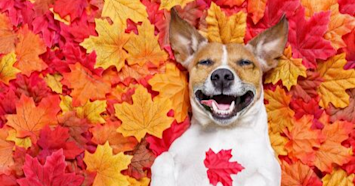
There is nothing quite like a crisp autumn breeze, beautiful foliage, and the smell of warm spices baking in the kitchen. Do beware though--fall ushers in a bushel of dangers for our furry companions. Here’s how to keep your pets safe and healthy this season.
Should you increase your pet’s food?
Some pet owners believe there is an increased need for food once the summer heat dies down. Is this necessary? Several decades ago, your veterinarian may have recommended a slight increase in your pet's food consumption as the weather cooled and your pet required slightly more caloric intake to regulate his system.
Today, however, things have changed. With a shocking number of pets categorized as obese and most dogs and cats are primarily house pets, this isn't a concern for most pet parents. If you do have a very fit working dog, a small increase may be a wise idea; with this said, an increase of around 10% is probably all that is necessary. This does not mean an extra meal or an unlimited pass to treats.
The Risk of School Supplies
Many curious cats and dogs love the school and home project supplies left lying around the house. While kids may be dedicated to keeping their school supplies tidy for the first week or so, at this point in the season, school supplies may be holding living rooms hostage. School glues, permanent markers, and pencils can all cause upset stomachs. Heavy-duty glues can cause serious blockages in the GI tract and even require surgery to remove them—and part of your pet’s GI system. Make sure your children's projects stay covered up and are not accessible to your pets. Dogs in particular seem to like the flavor of glue.
This also goes for adults if you’re doing home improvement projects now that the weather has cooled off. I once had to remove over 12” of the small intestine from a dog when his owner ran to Lowe's in the middle of a flooring project. His dog “helped” in the owner’s absence by ripping up the remaining linoleum and ingesting all the remaining glue. These accidents are easily avoided but repairing the damage is never as simple.
What dangers lurk when the autumn weather sets in?
Fall brings a plethora of fun opportunities and events; however, a lot of autumn-themed food and the accompanying wildlife can be dangerous for our beloved cats and dogs.
Apple Picking – Not Apple Grazing
As it turns out, apples are not the cure to health for Fido or Fluffy. If your dog likes to graze the ground for food, consider leaving Fido at home during your stroll of the apple orchards. While the flesh of ripe apples doesn’t pose a problem for dogs or cats, apple stems, leaves, and seeds are not so gentle. They can cause GI upset, decreased oxygen in the blood, decreased heart rate, difficulty breathing, seizures, coma, and even death. With reasonable preparation, the flesh of apples can make a suitable treat for dogs but cats are unlikely to enjoy the flavor of this fruit.
Keep the Rich Foods to Yourself
Sharing human treats can be dangerous and even deadly. Stay away from desserts, candies, fatty meat and trimmings, bones, gravies, calorie-dense casseroles, and seasoned sides. Don't forget garlic and onions are toxic! Many pet parents aren't aware of the many dangerous things that can happen, such as acute and life-threatening pancreatitis, a condition brought on when a pet ingests highly fatty foods.
A note for any season: Do you know the most popular flavor of dog medication? It's CHOCOLATE! Turns out we aren't the only ones that enjoy the rich flavor of cocoa beans. Dogs will go to great lengths, or counter-top heights, to indulge in this deadly vice so don't leave the candy bowl or kitchen counter unsupervised and within a paw's reach for a moment!
Mushrooms Flourish in the Fall
While most are non-toxic, dogs are highly susceptible to mushroom poisoning because of their wandering and scavenging behavior. Unfortunately, dogs are unable to sniff out the toxic ones, so the best way to avoid trouble is to keep pets away from areas where any mushrooms are growing. Dogs should be prevented from consuming mushrooms when they are being exercised. Profuse bloody diarrhea, vomiting, abdominal pain, dehydration, fever, and elevated heart rates characterize the initial phase of mushroom toxicity. Without treatment, the pet will succumb to liver and kidney failure within 3-7 days. As with most poisonings, prompt upper gastrointestinal decontamination and supportive care are critical elements of treatment.
Snakebite Season is Here
Autumn is the season when snakes prepare for hibernation and are more likely to strike, increasing the possibility of bites on naive and curious pets. Be aware of what kinds of venomous snakes are in your area and practice snakebite prevention by avoiding the areas they most often inhabit.
What fall activities are safe for my pet?
While apple orchards may not be the best option for dogs who like to snack while they walk, there are plenty of other events pet owners can partake in!
Go Pumpkin Picking
Pumpkin patches are great for dogs to romp around in (if pet-friendly!). Whether you intend on carving the pumpkin, having a photo shoot, or more, it is a great time with your best pup. Also, pumpkin, both raw and canned, is safe provided your pet is not suffering from a chronic condition such as kidney disease or diabetes. As far as our healthy pets go, seeds and flesh of fresh, raw, or cooked pumpkins are safe. Fresh pumpkin is more nutritious than canned. If you choose to go with canned, make sure it doesn’t have added sugar or sweeteners. An easy way to have some handy dog treats around that will last several weeks is by roasting the seeds in the oven.
Trick–or–Treating
Dress your pet up in something they are comfortable in and join the fun! If you have friends with pets have a pet-themed Halloween party. But make sure to keep your dog away from any stray candy lying around.
Go on an Autumn Hike
The changing colors, falling leaves, and beautiful sunsets make for an amazing experience for both you and your dog. The cool autumn weather will refresh both of you and get you ready for a warm blanket later in the evening.
Pro Tip: Make sure to bring water for hydration and a car blanket in case the trail gets muddy.

This comment has been removed by the author.
ReplyDelete